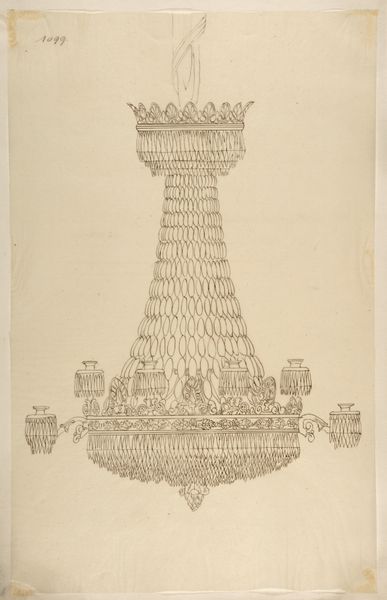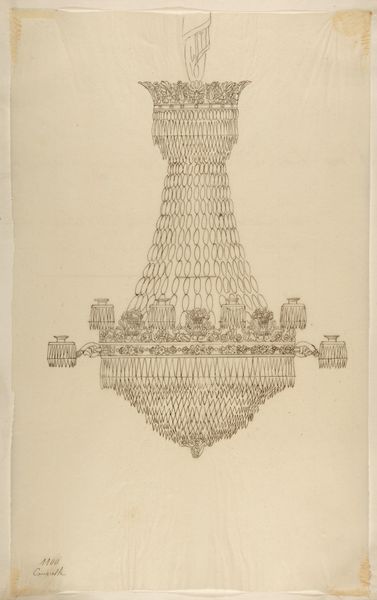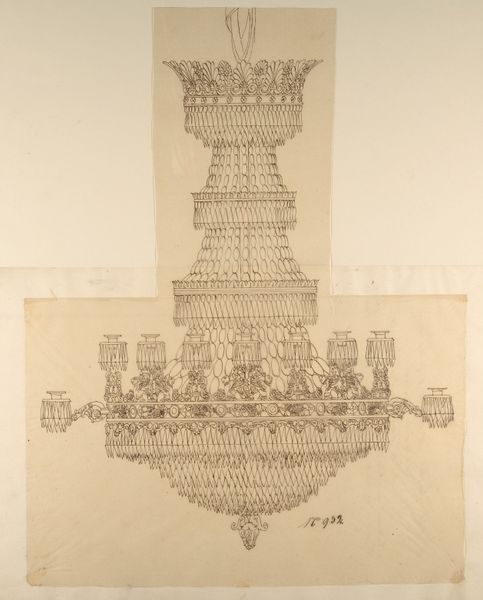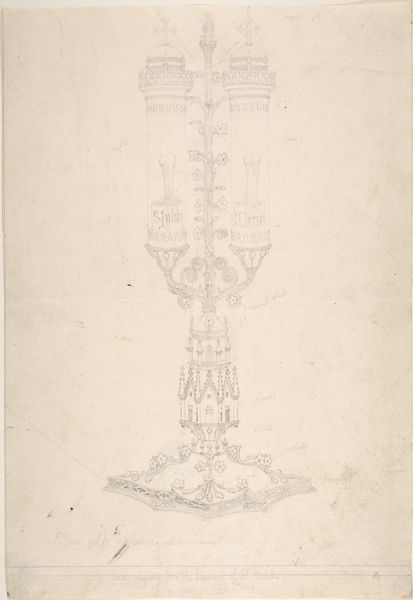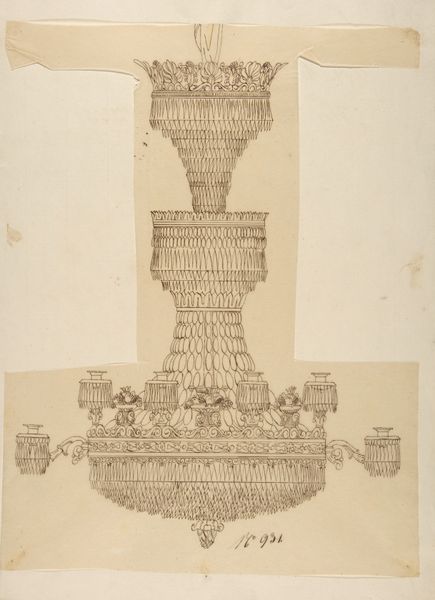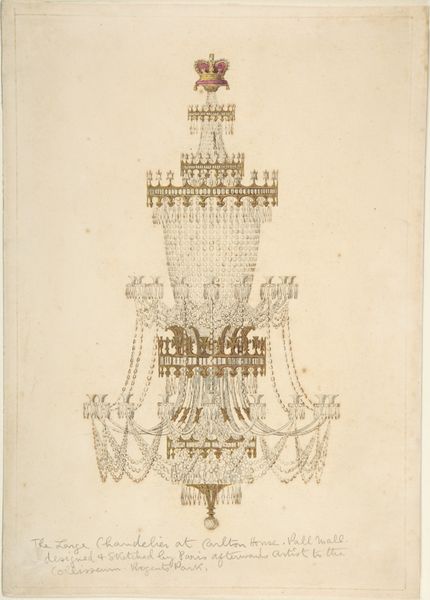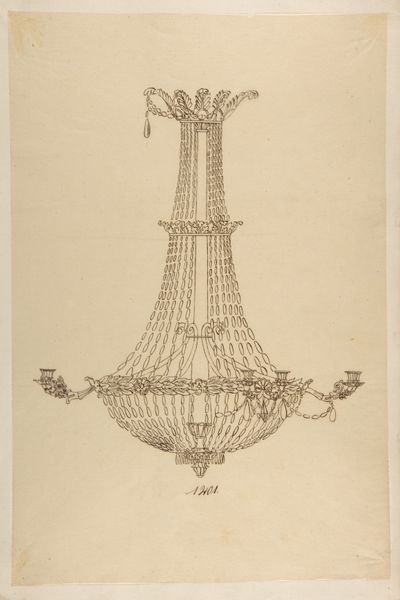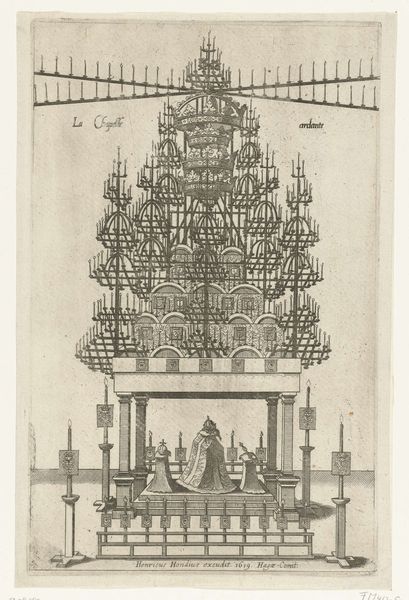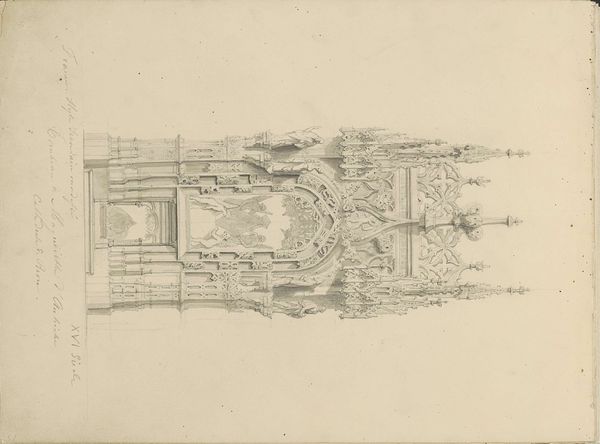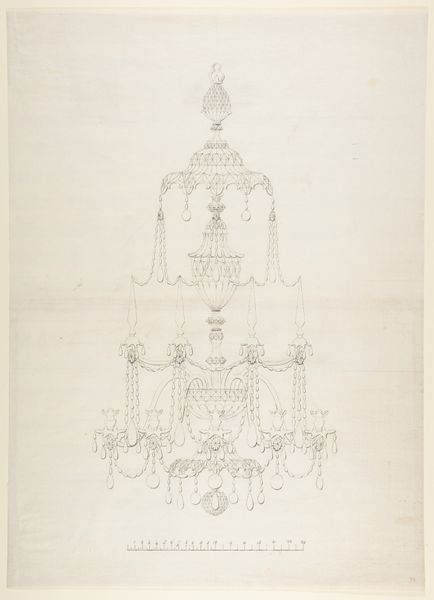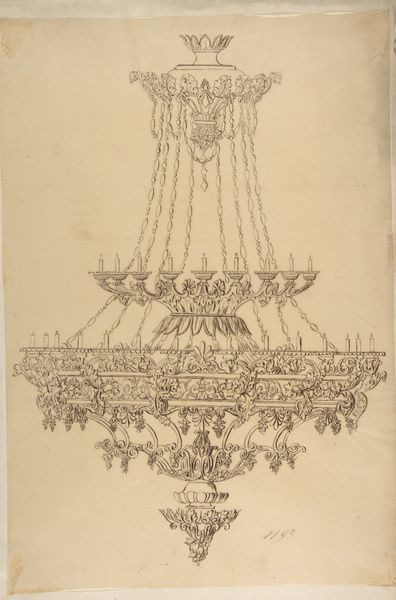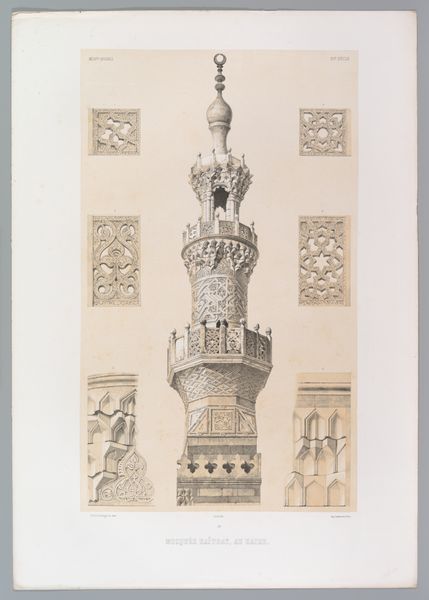
drawing, print, etching, paper, ink, pencil
#
drawing
# print
#
etching
#
etching
#
paper
#
ink
#
geometric
#
pencil
#
line
#
decorative-art
Dimensions: sheet: 15 5/16 x 12 1/16 in. (38.9 x 30.7 cm)
Copyright: Public Domain
Editor: This is a design for a crystal chandelier, an ink and pencil drawing from the 19th century, currently at the Met. I’m struck by its intricacy – it seems almost impossibly ornate. How do you read this kind of excessive display? Curator: What I see here is more than just ornamentation; it's a projection of power and social hierarchy codified in material objects. Think about the 19th century—the era of industrialization and colonialism. Luxury goods like this chandelier weren’t simply beautiful; they visually reinforced societal structures. Editor: So, you’re saying its aesthetic is tied to larger societal forces at play? Curator: Exactly! The resources, the craftsmanship, and the sheer cost of something like this chandelier placed it far beyond the reach of the working class. Its presence in a home would signify not only wealth but also participation in, and endorsement of, a system that perpetuated inequality. How might the gaze change, depending on who's looking up at the chandelier? Editor: That’s a good point. For the wealthy, it represents status, while for those excluded, it's a constant reminder of their marginalization. Curator: Precisely. Even the light it casts serves to illuminate, quite literally, the disparities in access and opportunity. How do you think viewing it as a contemporary audience changes its meaning? Editor: Well, today, we can appreciate the artistry while still acknowledging its complicated past. I suppose that’s part of what makes art history so fascinating, the way objects are never truly fixed in their meaning. Curator: I agree. Recognizing those layers of social and historical context gives us a more critical understanding, and invites us to question how similar dynamics play out today.
Comments
No comments
Be the first to comment and join the conversation on the ultimate creative platform.

